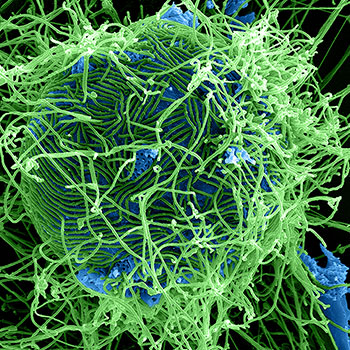What is SDS-PAGE of proteins?
1 Answer
It is the separation of proteins based on their molecular weight.
Explanation:
SDS-PAGE is the separation of proteins, in an electrical field, based on their molecular weight.
The proteins are denatured by heating to between 70 and 100°C in the presence of compounds such as 2-mercaptoethanol or dithiothreitol, and SDS (sodium dodecyl sulphate). The mercaptoethanol or dithiothreitol will break the disulphide bonds in the protein and cause it to unfold and become linear (like a long string with no folds). The SDS will help the unfolding process and also cover the protein in a negative charge.
 )
)
The mixture is then applied to a polyacrylamide gel (the PAGE bit in SDS-PAGE) and an electrical current applied. The negatively charged proteins will move in the electric field. The PAGE will prevent larger proteins from moving very fast compared to the small proteins (the PAGE acts like a sieve). The result will be that the large proteins will remain close to the start of the gel, whereas the small proteins will have moved further into the PAGE.
 )
)
You can see SDS-PAGE in operation in the video below:


